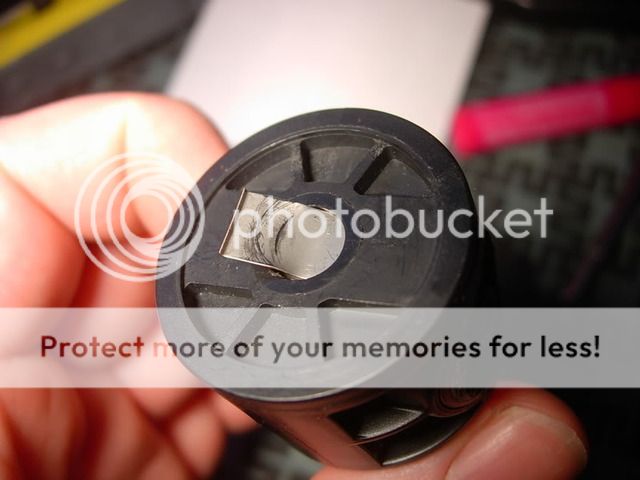on their switches. Looks like they went back to to the old style battery contact with no spring.


Only problem is this won't work too well with IMR batterys so don't throw away your old switch housings. In a light that uses FM battery holders or button top batterys you will enjoy less resistance with this switch. The new switch insert has a key to fit in the new housing but removing the keyed part and replacing it with the old style will allow the switch cartridge to fit the old style housing.
I had the switch in my m*g458 to blow a hole in one of the contacts. "Must have been defective" I changed it to the new style and saved the old housing for another mod. I can't say this switch is brighter than the old style when it was fresh but it's brighter now.
Billy


Only problem is this won't work too well with IMR batterys so don't throw away your old switch housings. In a light that uses FM battery holders or button top batterys you will enjoy less resistance with this switch. The new switch insert has a key to fit in the new housing but removing the keyed part and replacing it with the old style will allow the switch cartridge to fit the old style housing.
I had the switch in my m*g458 to blow a hole in one of the contacts. "Must have been defective" I changed it to the new style and saved the old housing for another mod. I can't say this switch is brighter than the old style when it was fresh but it's brighter now.
Billy



